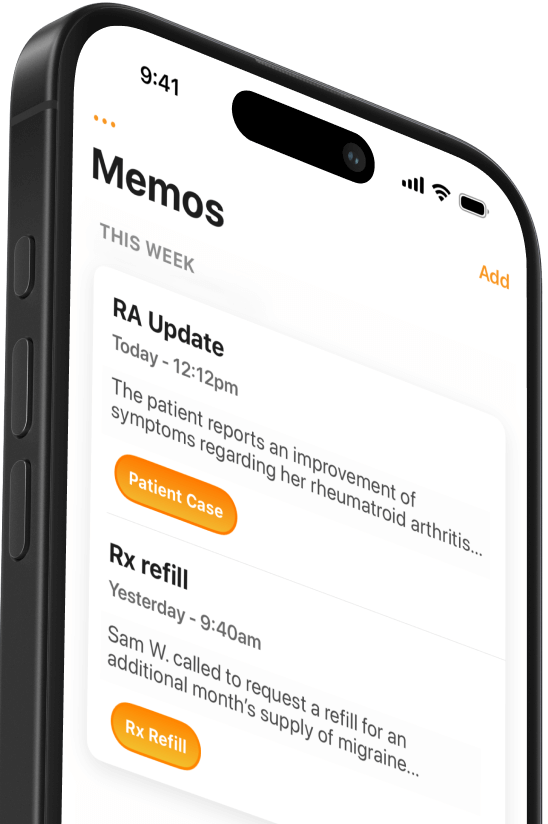Medical transcription: a brief history
Medical transcription began in ancient Egypt and now uses AI. Could digital scribes soon replace traditional transcription altogether?


Popular articles
Medical transcription has a long history and is still evolving with new technology like generative AI. Understanding this history can help current healthcare providers reflect on their purpose and process for documenting care in the 21st century.
History of medical transcription
As early as 1600 BC, Egyptian doctors wrote surgery notes on papyrus for teaching purposes. These notes are an early example of Western physicians documenting health care in writing.Medical transcription didn’t become mainstream until medical record-keeping became common in Europe and America around 1900. Before that, some doctors wrote down case histories for the same reason the Egyptians did in 1600 BC - to remember what works and teach others. However, neither medical documentation nor transcription was widespread before the early 20th century.
Medical transcription in the 20th century
As hospitals became significant healthcare centers, physicians began dictating patient notes and reports to typists or stenographers. These typists would transcribe the dictated recordings into written medical records.Medical transcription changed quickly in the 20th century. The following eras are one way to understand the developments.
- Introduction of dictation machines: In the 1950s and ‘60s, tape recorders or “dictation machines” made transcription more accurate because stenographers could work from a recording of the doctor’s note.
- Standardization: In the 1970s and ‘80s, organizations like the American Association for Medical Transcription (now the Association for Healthcare Documentation Integrity) pushed to standardize industry practices.
- Outsourcing and offshoring: In the late 20th century, technology advanced and global communication became more accessible. Many healthcare organizations started outsourcing their medical transcription needs to specialized firms, including offshore companies.
- Transition to digital: In the 1990s, electronic medical records became more common. As technology improved, many providers switched to entering patient information directly into the EMR, challenging the role of medical transcriptionists.
Speech recognition technology changed everything
In the 21st century, it’s hard to talk about medical transcription without discussing speech recognition technology. Medical dictation was once a manual process requiring a trained stenographer; today, most providers use a medical dictation app.The change began around 1998 when Nuance launched its Dragon medical speech recognition software. Suddenly, computers could transcribe spoken words in real-time. While initial speech-to-text capabilities were coarse, advances in Natural Language Processing gradually made automated dictation a normal part of everyday life (think: “Hey Siri”). These rapid speech recognition technology improvements mean that many of today’s doctors have never worked with a medical transcriptionist. Instead, physicians use medical speech-to-text software to dictate clinical notes directly into the EMR.
Medical transcription meets generative AI
Medical transcription continues to evolve alongside new technology, most notably advances in artificial intelligence. For example, companies like Nuance, Augmedix, and Mobius MD sell AI-powered “scribes” that can capture patient-provider conversations and turn them into accurate clinical notes. With recent advances in generative AI, it’s easy to imagine a near future without medical transcription per se. Instead, medical record-keeping will be entirely in the background and automated by computers. Providers will simply review computer-generated notes for accuracy, make quick edits, and submit them to the EMR.
AI in medicine is a complex topic, but it’s hard not to read a reduction in doctors' administrative duties as progress. At a time when physician burnout has been declared a public health crisis, most providers wouldn’t complain if clinical documentation was no longer a big part of their workday.
Related Articles


We Get Doctors Home on Time.
Contact us
We proudly offer enterprise-ready solutions for large clinical practices and hospitals.
Whether you’re looking for a universal dictation platform or want to improve the documentation efficiency of your workforce, we’re here to help.





